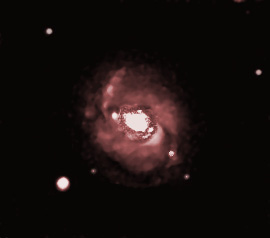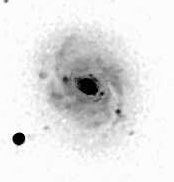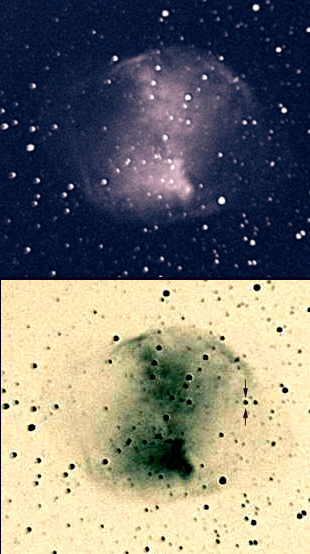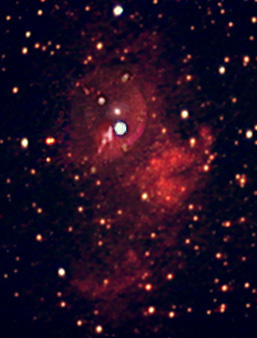M77 Galaxy
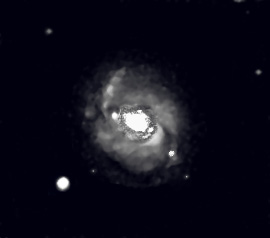
This galaxy is located in the Cetus (The Whale) constellation and is aproximately 60 million light years away. The photons that fell upon the ccd chip to make up this image were created around the time that dinosaurs roamed the Earth!
This is a small spiral galaxy seen face on, one of the so called Seyfert galaxies, which in this case means it has a radio source probably caused by matter falling into a black hole. It is receding from us at about 1100 miles per second. Actually, saying this is a small galaxy is a misnomer. It looks small but in fact it is very large. When you include the outlying gasious areas, it's about 170,000 light years across, almost twice as large as our Milky Way.
This image was taken from my front driveway on 11/13/04 at 1:00 am est with my new atk-2hs webcam. The small image below is with false color added. The negative image beside it shows that M77 is larger than it first appears and in fact, its gasious envelope is almost as big as the galaxy itself.
Techno Stuff: 11/13/04 at 1:00am est (6:00am ut), LX-90 8"
sct, baader ir, atk-2hs, gain 100% gamma 0% saturation 50%
brightness 50% white balance-outside, 22 frames out of 70
processed in k3ccdtools, registax and photoshop, dark
frames used
